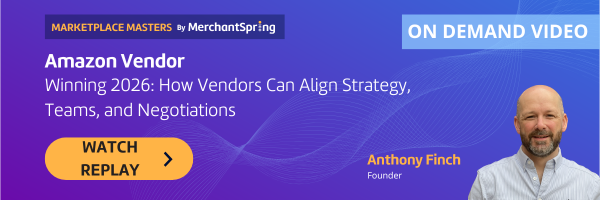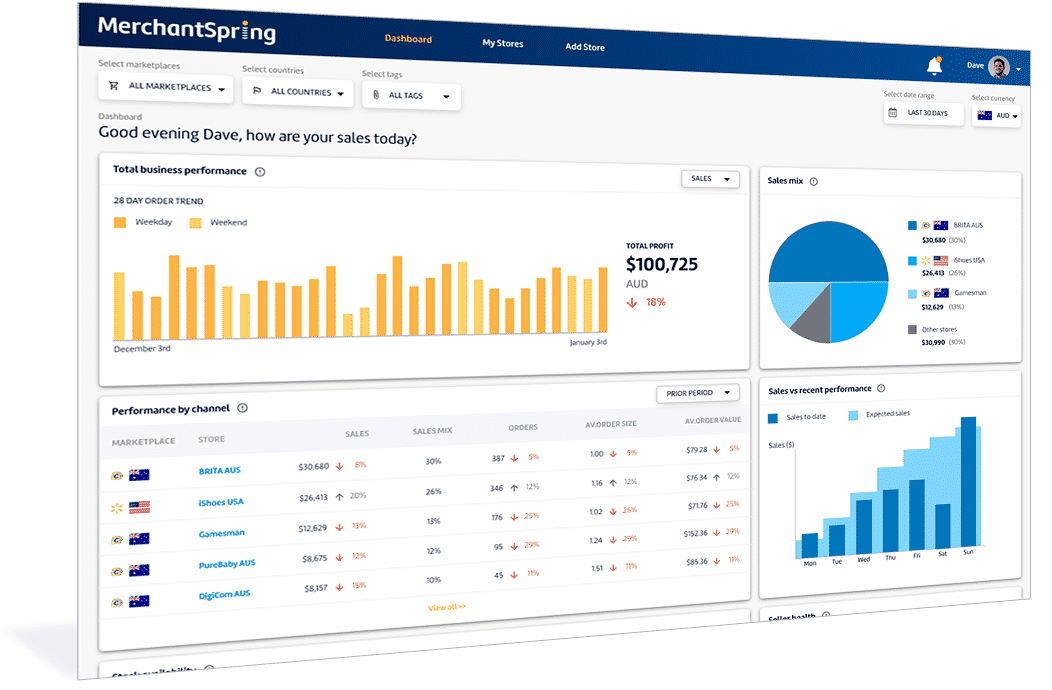Amazon Vendor Negotiations 2026: Shift from Defense to Strategy
Overview
The next round of Amazon Vendor Negotiations (AVN) is just over the horizon — but for many vendor accounts, the approach is still fixated on cut-and-paste tactics: pushing back on marketing accruals, fighting cost price increase (CPI) demands, or scrambling to deliver revised trade terms. That reactive model is fast becoming inadequate in 2026.
Instead, top-performing Amazon vendors are shifting earlier — auditing internal business health, aligning stakeholders, and turning AVNs into a predictable outcome of strategic intent. In this article, we’ll flip the script: negotiation is not the start, but the end. We’ll walk through a leadership playbook for agencies and brands to build winning vendor portfolios — from margin audits to C-suite storytelling — so that when AVNs arrive, your position isn’t defensive, it’s commanding.
“Take control of the situation, not let Amazon drive the momentum of your account.” — Ant Finch
This guide speaks to Amazon agency professionals: those managing or advising 1P vendor clients. Your mandate is not just to win one negotiation — it’s to build client confidence, margin resilience, and long-term growth.
Zooming Out: Why AVN Should Not Be the Starting Point
Across the webinar, Ant and Paul emphasised that many vendors default to focusing on the AVN season itself — a narrow, hyper-tactical lens. That creates two fundamental risks:
- You react to Amazon’s demands instead of driving your own agenda
- You miss structural margin drains that become negotiation blind spots
Rather than let the negotiation define your year, invert the paradigm: strategy first, negotiations second. Use the months ahead of AVN to audit, align, and position. As Ant said:
“Planning and preparation should start almost the moment you've closed the first AVN … so you can go, ‘What do we need? And what are Amazon likely to need?’" - Ant Finch
When your negotiation is coming from strength — not desperation — you shift Amazon’s posture from aggressor to partner.
Audit First, Negotiate Later: Finding Margin Leaks
The cornerstone of this approach is a deep business health check well ahead of negotiation season. Here’s a three-layer audit framework agencies should lead with their clients:
- Retail performance metrics — key health signals: conversion rate, glance views, net PPM (net pure profit margin), ship cost WAC (weighted average cost), returns rate.
- Product-level deep dive — don’t audit every SKU; pick the top 10–20 that drive revenue or carry strategic weight. Are they profitable after full cost allocation (warehousing, freight, overhead)?
- Operational & execution audit — the leakiest layer. Examine chargebacks, order process days, packaging tiers, pack size disjoints, invoice accruals, and supplier defects.
In the transcript, Ant points out:
“That could be a really small tweak that gives you massive returns back in terms of your chargebacks … getting into that granular level detail and identifying where that leakage is coming at product level is … quite fruitful.”
One agency-level insight: build a “margin leak dashboard” to monitor chargebacks, term overclaims, and SKU margin erosion continuously. As part of your service, alert clients to red flags (e.g. sudden spike in damage allowances or freight underruns) before the AVN window.
Product-Level Profitability: The Core Unit Economics
While aggregate vendor metrics matter, Amazon cares about incremental contribution on individual SKUs and how your catalog aligns with category dynamics. Thus:
- Create product-level P&Ls for your top SKUs
- Identify the “volume drainers” — high sales but low or negative margin — and flag them
- Where necessary, delist, re-engineer or re-launch to protect margin integrity
Agencies should coach clients to create Amazon-exclusive SKUs that meet Amazon’s margin expectations while preserving brand margins elsewhere. This gives you negotiating flexibility (e.g. you can offer Amazon variation without compromising core ranges).
Advertising & Promo Alignment
A recurring misstep: treating Amazon ads/retail media as a silo, disconnected from the core retail strategy. Instead:
- Integrate ad spend as part of P&L, not “bonus marketing budget”
- Shift spend toward search keywords aligned with high-margin SKUs
- Optimise promotions not just for revenue but for margin delta
By doing so, you reduce the negotiation pressure around marketing accruals — your ad performance already contributes to the case you bring to Amazon.
Terms & Trade Drivers as Levers, Not Surrender Points
One of the most maligned assumptions among vendors: “Amazon’s trade terms are fixed and non-negotiable.” But in truth, many vendor terms are levers you can push and pull — if you know which ones and how.
Vendor terms include:
- Co-op marketing accruals
- Freight allowances & discounts
- Damage allowances/returns allowances
- Service program fees (e.g. Subscribe & Save, Vine)
- Payment terms / early pay discounts
- Operational investment buckets
The key is strategic trade-offs: give Amazon something it values highly, in exchange for something you care more about (e.g. faster payment, lower marketing fee, improved visibility). Dirk Brederecke (in a referenced MerchantSpring guide) framed this as:
“It’s not about a one-sided negotiation … trading value for value.”
Agencies should map a term priority matrix for clients, ranking terms by negotiability and importance — then choreograph trade proposals to achieve balanced exchange.
Benchmarking & Competitive Context
Many clients ask, “Where do we stand relative to peers?” Benchmarking is tempting, but must be handled carefully:
- Use competitive benchmarking as directional context, not as a decision driver
- Tools exist that provide relative revenue, share or price data (depending on category)
- More important: define your own aspirational benchmarks based on your cost structure and margin goals
Ant cautions:
“It kind of doesn't matter what anyone else is doing … do what you need to do to make it work for you, not what works for everyone else.”
As an agency, nuance this conversation: show clients category range, but orient them toward internal competence, not peer imitation.
Structure & Ops: Building the Vendor Organisation
Execution is as important as strategy. Ant outlines best practices in structuring vendor organisations:
- Maintain a lean commercial core in-house, supplemented by agency support for specialised functions (DSP, content, ads)
- Do not default to a one-person “Amazon manager” — it doesn’t scale
- Design cross-functional pods: representatives from finance, supply chain, marketing, operations — all aligned to Amazon goals
- Use regular alignment workshops: when stakeholders verbalise “our Amazon objective”, you’ll likely see three different answers. Get everyone unified.
Think of your role as an agency: help the client build the skeleton; provide muscle via execution. The stronger the internal model, the less reactive you are under AVN pressure.
Aligning Stakeholders & Securing C-Suite Buy-In
One of the biggest failure points in vendor strategy is a lack of executive support. Some leaders still view Amazon as “just another channel.” To overcome that:
- Communicate both wins and pain: don’t only showcase success, but surfacing challenges and tradeoffs shows control
- Translate Amazon metrics into business KPIs: cash flow impact, return on capital, margin contributions, inventory risk
- Create a stakeholder “Amazon brief” — tailored slides that distill complexity into the internal language
Ant's advice:
“If you can't educate them on Amazon, … convert the Amazon language into internal language to help with understanding … you oversteer on the communication.”
As an agency, offer clients templated C-suite decks: clean, strategic narratives that reduce friction and establish your client as credible.
Scenario Planning & Modelling for AVN
Negotiation doesn’t exist in a vacuum. Agencies should lead clients in scenario modelling:
- Best case: minimal margin concessions, favourable trade term shifts
- Base case: Amazon’s standard asks, with negotiated tweaks
- Worst case: heavy concessions, term compression, inventory risk
Define your ZOPA (Zone of Possible Agreement) — the range within which you can give and take. Preload fallback proposals. Use data-backed buffers to help clients resist pressure.
By presenting counteroffers anchored in strategy (rather than reactive quotes), you shape the negotiation narrative.
Post-AVN Reset: The New Year as Opportunity
Once the AVN concludes, the moment to reset gains is in January. That’s your chance to:
- Re-establish benchmarks (conversion rate, net PPM, ad ROI)
- Map the annual promotional calendar (Prime, back-to-school, Q4) into trade planning
- Start executing margin-protecting optimisation loops
- Monitor “term creep” across the year (i.e. Amazon slipping additional fees midyear)
Don’t let AVN be the finish line — treat it as the baseline for continuous improvement.
Amazon AVN 2026 is coming — but you don’t have to treat it like a contract siege. When you lead with audit, structure, alignment, and narrative, you transform negotiation from a reactive scramble into the predictable outcome of disciplined preparation.
If you’re an Amazon agency professional, this is your playbook: own the audit, design the stakeholding narrative, push thoughtful trades, and shepherd the reset. And if you’d like to see the full webinar replay or explore how MerchantSpring or Vendor Rocket can support your AVN strategy, drop me a message or watch the session here: Winning 2026: How Vendors Can Align Strategy, Teams, and Negotiations.
Ready to turn AVN 2026 into a growth lever, not a battlefield? Let’s make it happen.














Add a Comment